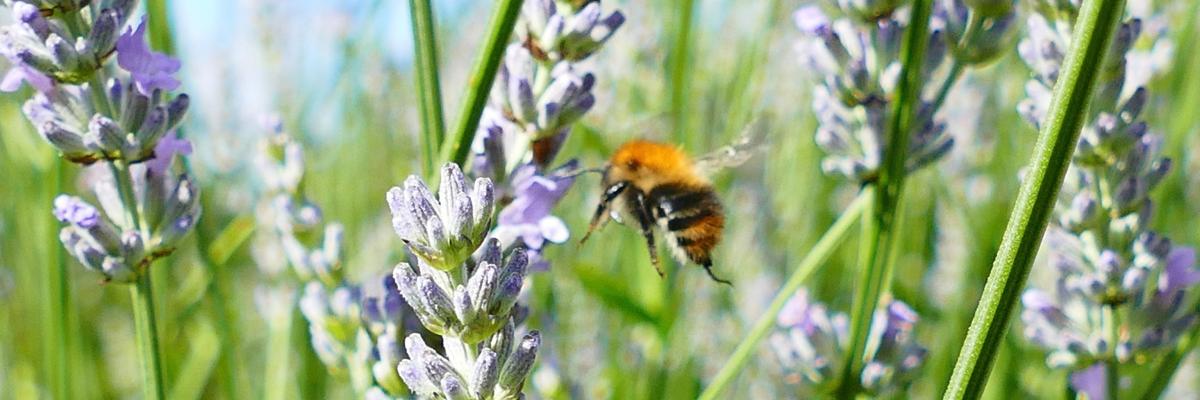

It’s not just about the bees
Article by organic vegetable farmer Andy Dibben
Download the PDF
"Insects managed correctly in agriculture transform quickly from being a pest to being a powerful tool." So starts this piece written by organic vegetable farmer Andy Dibben, a farmer passionate about the role insects can play as "potential guardians of our crops." Andy is currently head grower of the fruit and vegetables grown at Abbey Home Farm; a diverse mixed organic 1,600 acre farm near Cirencester, Gloucestershire, where he manages the 15-acre horticulture holding, a third of which is under agroforestry. Here he puts forward the case of allowing complex insect ecosystems to develop or be proactively encouraged on farms, describing ways in which this can be done, drawing on his own extensive knowledge, and emphasising the very many benefits that can be had if farmers "embrace the boosting of biodiversity as a powerful tool for food production."
- Pollen is the key currency farmers have to trade with insects in exchange for crop protection. The adults of lacewings, hover flies and parasitoid wasps all rely on it as a key source of protein. Creating a pollen-rich habitat in and around your crops for as long a season as possible will help ensure a constant population of beneficial adult predators.
- Perennial wildflowers are often seen as being the most important source of pollen for insects. However, there are other sources which will help keep beneficial predators nearby (provided via flower and tree pollen).
- The key distinct groups of flowering plants available to farmers to provide pollen throughout the growing season are perennial wildflowers, annual wildflowers, grasses, cover crops, weeds and the crops themselves.
- Farmers are accustomed with timing sowing dates to achieve a particular harvest date, the same skill can be applied to producing pollen on-demand for insects. Andy describes how he uses mixed cornfield annuals for this purpose.
- Cover crops can boost soil ecosystems and insect ecosystems, simultaneously leading to massive increases in crop health and vigour. To achieve this, they must be allowed to flower but not set seed, so should be cut or grazed at appropriate times.
- Andy aims to keep most of his crops weed-free for the first 8 weeks, which allows them to outcompete the surrounding plants. Weeds then become as asset rather than a problem - their root exudates will feed soil life and their flowers will provide another varied source of pollen.
- Allowing crops to stand in the field after you have finished harvest is another good technique for proactively managing insects.
- Trees that produce catkins are one of the earliest sources of pollen available in the UK countryside. Perhaps the most effective way of using tree pollen as a technique to manage predatory insects is where trees are intelligently integrated throughout cropping areas (agroforestry).
- Having a perennial undisturbed habitat on your farm will allow beneficial predatory insects to shelter from strong wind and rain during the growing season and will also provide shelter in the winter months.
- Tools for maximising plant diversity and slowing down and confusing pests include avoiding fields of monocrops, practicing crop rotation, allowing weeds to come back into your crops once the crop is established, and undersowing crops with green manures.
Andy has been part of a group of growers sharing knowledge and experience of increasing diversity in protected cropping as part of the DiverIMPACTS project.
Photo taken by Ben Pearson. All Rights Reserved
